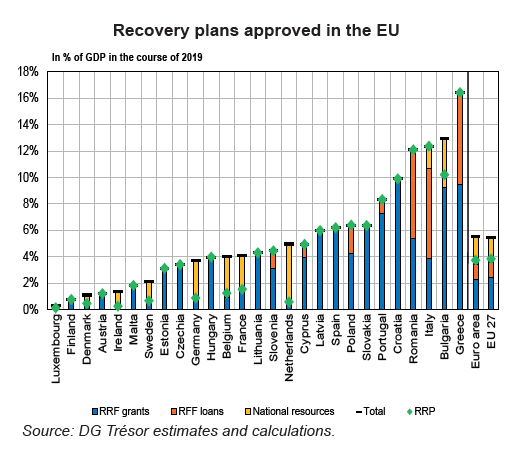The Expected Benefits of the European Recovery Plans Introduced in the Wake of the COVID-19 Pandemic
European Union Member States agreed on an unprecedented joint response based on common debt to support the post-COVID-19 recovery. The European recovery is expected to foster the convergence in living standards within the EU, and support innovation, productive potential and the reduction of structural unemployment. It will also help take up the challenge of the green and digital transitions.
Following the COVID-19 pandemic and the emergency measures implemented to mitigate the loss of income for households and safeguard businesses, European Union (EU) Member States agreed on the NextGenerationEU (NGEU) package which is an unprecedented joint response to support the recovery, making over €800bn available to Member States.
The European recovery plan is financed by common debt for the first time in EU history and by national resources (see chart). The Recovery and Resilience Facility (RRF), NGEU’s centerpiece, funds the Recovery and Resilience Plans (RRPs) comprising reforms and investments determined by the Member States.
European recovery plans are expected to foster the convergence in living standards within the EU since a significant share of RRF funds are allocated to countries with low levels of GDP per capita.
Recovery plan reforms and investment will underpin innovation and productive potential, thereby enhancing potential growth, and bring down structural unemployment, especially in those countries that had larger structural weaknesses prior to the pandemic. The European recovery plan will help take up the challenge of the green and digital transitions to which national recovery plans have to devote a minimum amount of green and digital investments.
The plans of some countries with current account deficits focus on supply-side measures. However, narrowing external imbalances within the EU and the euro area would have been more effective with better coordinated implementation of the European recovery plan: countries with large current account surpluses could have concentrated their plans more on demand-side measures. In this respect, bolstering the macroeconomic imbalances procedure (MIP) could contribute to improved coordination of economic policies in the EU.
